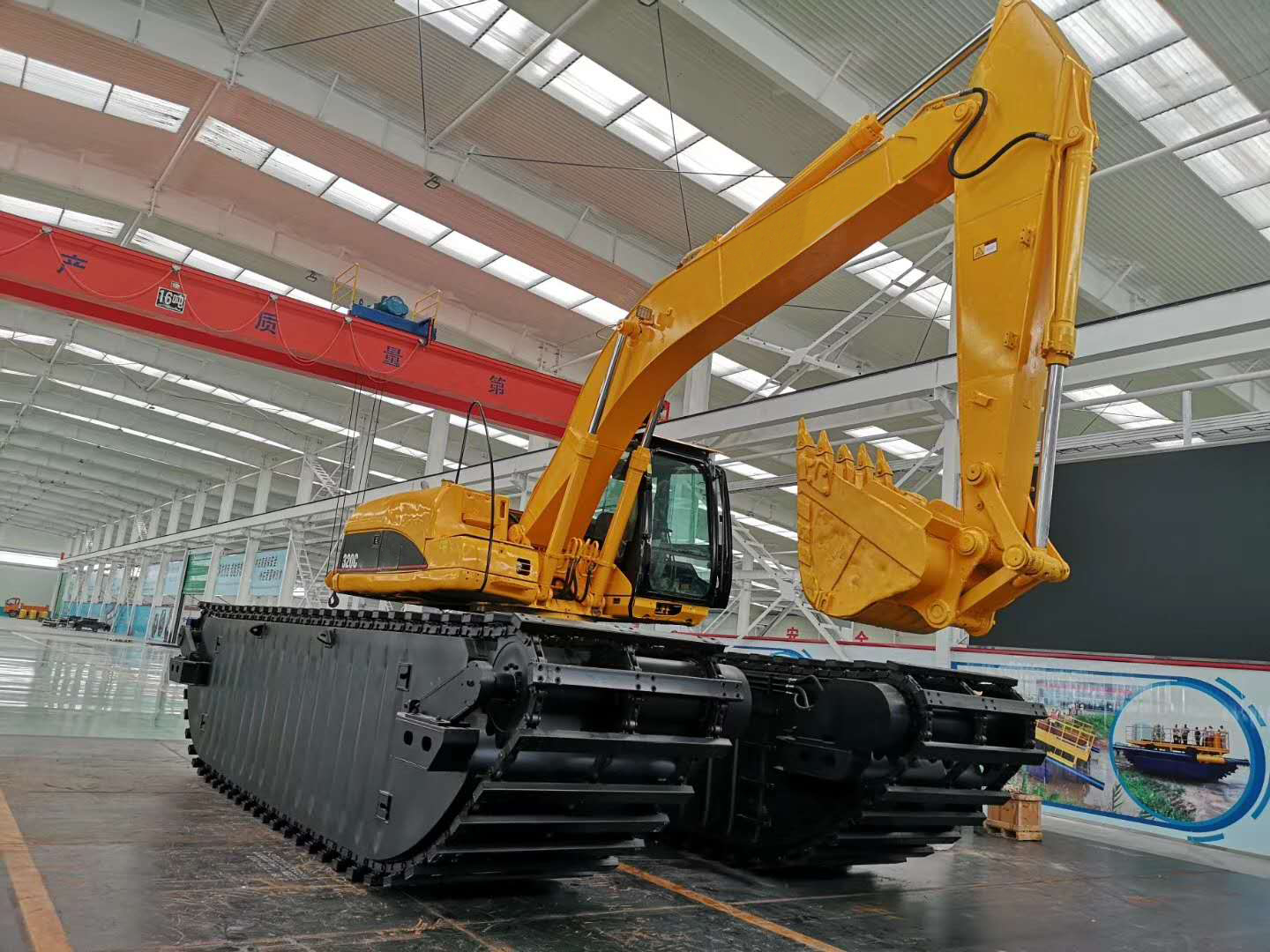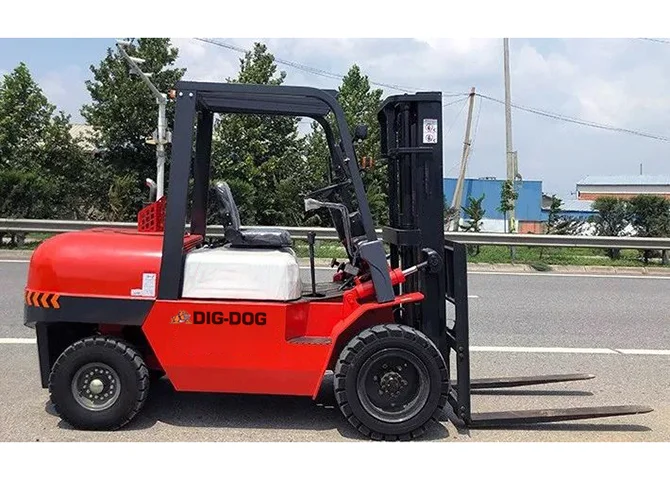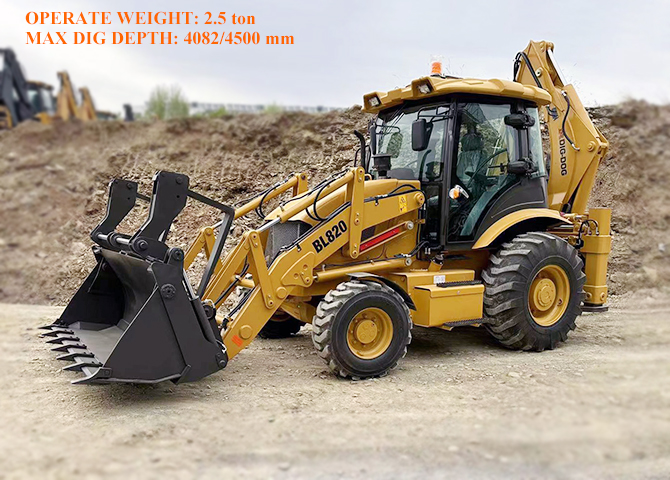An amphibious excavator is a type of amphibious engineering equipment that can dig on land and in water. When digging and walking on land, the crawler chain will increase the life of the poly aluminium chain through more severe wear and tear when it touches the ground, especially when the chain of an amphibious excavator breaks, which is a very troublesome thing.

An amphibious excavator is an amphibious piece of construction equipment that can dig on land and in water. When digging and walking on land, the crawler chain increases the life of the poly aluminium chain through more severe wear and tear when it comes into contact with the ground, especially when the chain breaks on an amphibious excavator, which can be a real nuisance. In fact many people are curious about amphibious excavators. How do excavators of tens of tons work on water? But the truth is that when one really gets to know it, it may not be as complicated as one might think. For amphibious excavators, it must depend on the kind of environment they are working in. If they are working on the beach or at a lake, they should use reinforced amphibious excavator equipment.
For reinforced amphibious excavator equipment, the steel plates are usually up to 6mm thick, which can lead to a reduction in the overall strength of the entire amphibious excavator. In addition, reinforced excavators mostly use better welding wire. Due to the price and cost, ordinary excavators can only use some cheaper welding wires, while the use of more expensive and costly quality welding wires can ensure a longer service life of the excavator under various harsh conditions. However, for amphibious excavators, the purchase price of some of the better quality excavators is usually very expensive. For some projects, the cost can be significantly higher if expensive excavators have to be purchased for a construction project.
This will affect the overall project construction goals. Therefore, for any project, the selection of excavator must be based on the scale and cost of the project. On the one hand, costs have to be considered. We should not spend too much money on some excavator equipment. More importantly, with limited costs, choosing to buy or lease the right amphibious excavator model and equipment can save costs and ensure the smooth development and construction of the project. This is something that project managers must consider when choosing which amphibious excavator to use.
When it rains, most work environment issues are affected and become less favourable. After heavy rain, the road design starts to develop and potholes appear, these potholes can accumulate together with large amounts of mud and the road can become extremely slippery. This is not a good thing for the operation and management of amphibious excavators. It is therefore important to always be aware of the road conditions when operating in the rain, especially on some of the thicker soils in the country. The land in these businesses can be particularly slippery after heavy rain. Also, when pushing and shovelling materials, try to use a small throttle for analysis to reduce the social hazards of amphibious excavators. Secondly, amphibious excavator tractors also need to pay close attention to road conditions. Only by maintaining their own safety can they better ensure the safety of the amphibious excavator, especially on uphill roads. If there is too much mud on the road, it must be removed and the road cleaned. However, amphibious excavators need to be stopped immediately if they fall or tip over due to soft ground. The amphibious excavator is based on an excavator and replaces the original land walking chassis with a floating bucket action method. With this change, the excavator is equipped with a digging device that floats on the surface and crawls in the diving area. The amphibious excavator is based on an excavator, but with a floating bucket action instead of the original land-based walking chassis. With this change, the excavator is equipped with an excavating device that floats on the surface and crawls in the diving area. It can be said that with this modification, the amphibious excavator can walk underwater and dig at water depths of around 1.5m to 1.7m through the benefits provided by the floating tank in one example in Zizhong. The ability of the amphibious excavator to travel under water is essentially achieved by the contact between the excavator body and the underwater surface. When the excavator is equipped with a floating bucket, this installation will allow the amphibious excavator to float in the water.
This type of amphibious excavator relies heavily on the bucket to glide through the water, but it must be noted that it is not suitable for digging in deep water. The main reason for this is that the amphibious excavator floats in the water and it is very difficult to dig with the bucket in the water. When digging heavy loads, the amphibious excavator may lean forward or be unable to maintain its centre of gravity. In fact, for many construction companies, amphibious operations with amphibious excavators often involve digging in uncharted waters. What kind of underwater environment is uncertain and difficult to judge. Based on the safety of the operator driving the excavator and the excavator itself, amphibious excavation is not an option for most construction projects when the water is too deep and the conditions are complex.
As safety incidents usually occur, such situations can cause injury to both the excavator driver and the excavator, something that many project contractors do not want to see and face. Therefore, when using an amphibious excavator for underwater excavation, it is important to be fully aware of the underwater conditions beforehand. When excavating in unknown waters, do not choose deep water submerged environments for excavation, but even in shallow water, take adequate safety precautions to avoid causing significant damage to the amphibious excavator operator and the excavator itself.
Amphibious excavators can float when working, but another problem is that in some cases the water may not be particularly deep or even a little shallow, resulting in the equipment not floating when it enters. This situation may cause the centre of gravity to roll or tilt. Therefore, it is important to observe the water well before entering. Another issue that needs attention in operation then is maintenance. Because this equipment has its special aspects and is often operated in the water, it is important to strengthen it to ensure that it operates properly in the long term.
 A Ultimate Guide to Clamp Forklifts and Attachments
A Ultimate Guide to Clamp Forklifts and Attachments
 How To Choose The Right Compact Wheel Loader
How To Choose The Right Compact Wheel Loader
 How Much Does a Forklift Weigh?
How Much Does a Forklift Weigh?
 How Much Does a Backhoe Weigh
How Much Does a Backhoe Weigh